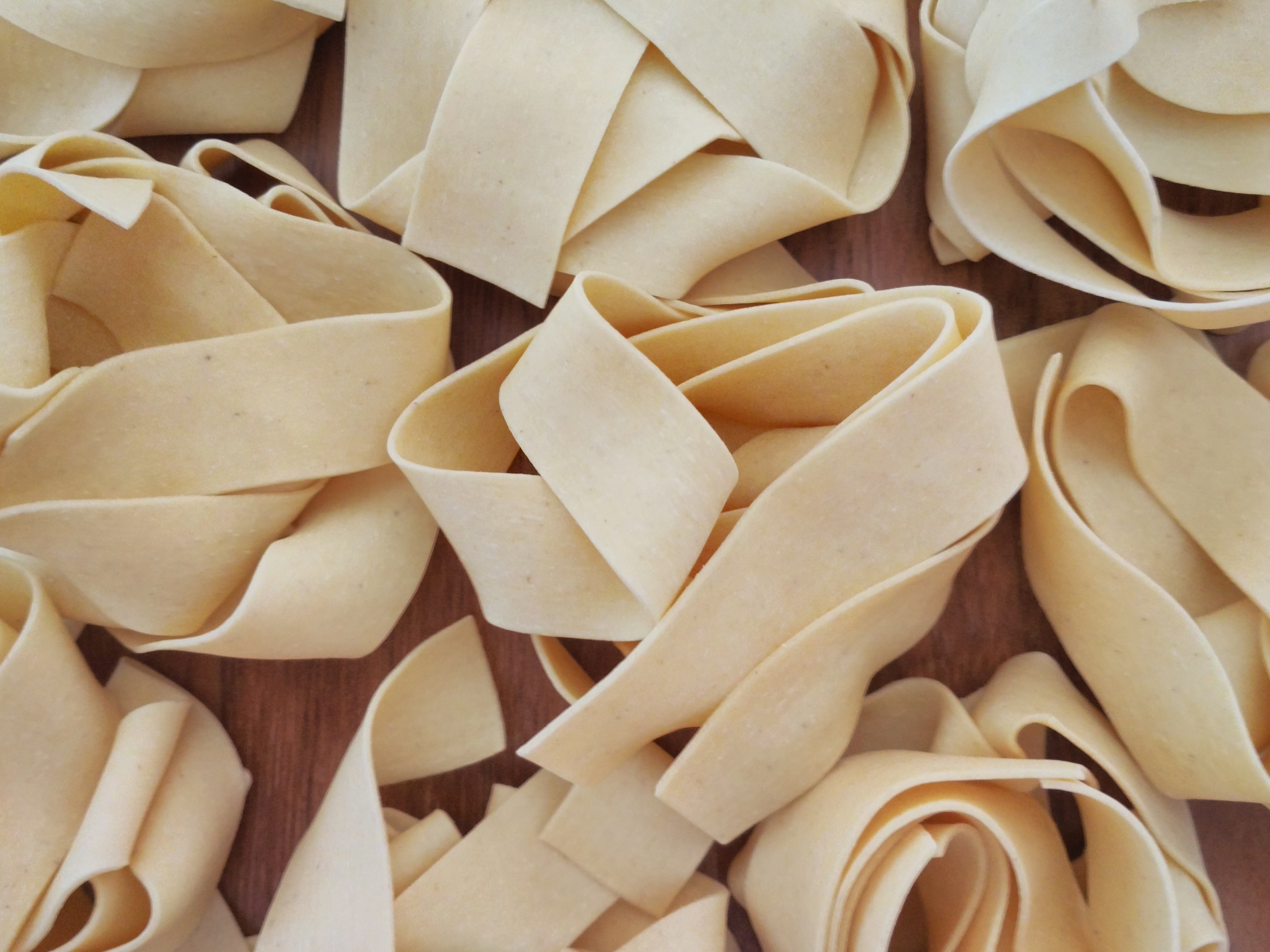Exploring the linguistic influences on medieval English cuisine

Medieval English recipe names are frequently odd. And sometimes, as a translator, I’m led down a dodgy etymological path by a name that looks like a mangled concoction of Middle English and Old French or Anglo-Norman, only for it to turn out to be something quite different.
A good example of this is from my early days of translating Forme of Cury, Richard II’s famous cookery book. I came across Buknade – a stew of either chicken, rabbit, or veal – looked it up in the Middle English Dictionary, which suggested a possible derivation from Old French buquet ‘bucket’, and leapt at the rather exhuberant, if not endearing, translation, ‘bucket of stew’!
Fortunately, I was saved from eternal embarrassment by the editors of Curye on Inglysch, an edition of various fourteenth-century cookery texts, published by The Early English Text Society in 1985. And so Constance B. Hieatt and Sharon Butler brought to my attention the fact that the root buk- signifies the meaning of ‘veal dish’; the very smart ones amongst my readers will recognise the etymological link to the famous Italian veal shank dish ossobuco.
There are occasions, however, where I’ve had a hunch about a particular recipe name that turns out to be surprisingly sound. And the example I’m going to give you is another Middle English name which shows Italian, rather than French, influence: papdele.

Hares in papdele
Tak hares, perboile hem in gode broth; cole þe broth & waische þe flesch, cast ageyn togyder; tak obleys oþer wafrouns in defaut of loseyns & couche in disches; tak poudour douce and lay on; salt þe broth & ley onoward and messe hit forth.
Hares in pappardelle
Take hares, parboil them in good broth; cool the broth and wash the meat, return together again; take oblées or wafers, as a substitute for lasagne, and lay into dishes; take and lay on powder douce; salt the broth and lay it over, and serve it forth.
Text and translation by Christopher Monk © 2020
My gut-feeling, when first reading this recipe, was that papdele was a corruption of pappardelle, the well-known broad ribbon pasta. Unfortunately, the Middle English Dictionary couldn’t corroborate my hunch, merely offering up the vague possibility that it meant ‘a sauce’, and was connected etymologically to pap ‘gruel’.
Not very satisfied, I consulted Hieatt and Butler, who also mentioned the possible, though not likely, link to pap, before offering what to me seemed an even more tenuous link to French perdu; and so ‘smothered hare’ was their tentative translation of ‘Hares in papdele’.
Not deterred, I looked a little closer at the recipe. I realised that in essence this dish was a pasta dish; or, to be more accurate, it was originally a pasta dish. But, as the text implies, King Richard’s cooks had substituted thin oblées or wafers for the original lasagne, the broad sheets of pasta that appear elsewhere in Forme of Cury. Oblées, by the way, were so named because they resembled the oblées — communion wafers — baked for the Eucharist, or Holy Mass
So, I was convinced there was indeed a pasta association in the recipe’s title. And papdele and modern pappardelle seemed obviously linked to me. But why would the title not allude to the substituted lasagne mentioned in the body of the recipe text? Why, if my hunch was right, did it instead point to pappardelle?
Not being an expert in medieval (or modern) Italian, I needed some help. So I shot off a Twitter DM to the lovely Italian folk at Historical Italian Cooking (HIC) and also sent an email query to the very obliging linguistics professor, Dr Anthony Buccini.
“I believe your hunch is absolutely correct”, the kind professor announced. Both he and the HIC team directed me to Giovanni Boccaccio’s mention of pappardelle in his work, Il Corbaccio, which was published around 1360, about thirty years before Forme of Cury was penned.
In this text, Boccaccio refers to pappardelle eaten with Parmigiano cheese: ‘le pappardelle col formaggio parmigiano’. As we can see, the medieval spelling is the same as the modern Italian (at least in the edition to which the HIC team referred me). This pasta appears elsewhere in later medieval texts (though spelt variously), and thus it is very clear that pappardelle was a very well-known form of pasta throughout medieval Italy, and was definitely being eaten before the time of Forme of Cury.
In fact, Dr Buccini, who is actually writing a book about food in the Mediterranean, in which there will be a long section on pasta, informed me that there is a close connection between pappardelle and the medieval cuisine of Tuscany, where this pasta often accompanied lepre ‘hare’. Moreover, Dr Buccini assured me, Middle English papdele is most probably a ‘deformed reflection’ of pappardele. Hooray! My hunch was confirmed. But why did pappardelle and not lasagne find its way into the English name?
The HIC team came up with an observation that provided me with a possible explanation: culinary lexicon is quite messy, in particular about pasta, and in the later Italian sources lasagne and pappardelle are frequently used synonymously. In other words, I’m suggesting, this conflation or confusion between the two named pastas appears to have been anticipated, admittedly in a somewhat haphazard way, in our fourteenth-century English cookery book.
I’m not sure everyone would share my unbridled joy, but I do find this kind of thing rather exciting. To think that in fourteenth-century England, Italian cuisine was having a significant influence on the English royal kitchens. Moreover, I think we can say for the first time, without reasonable doubt, that pappardelle was one of those influences.



Wow! That is so cool!!!! Well done, you!
LikeLike
Thank you, Kay 😊
LikeLike